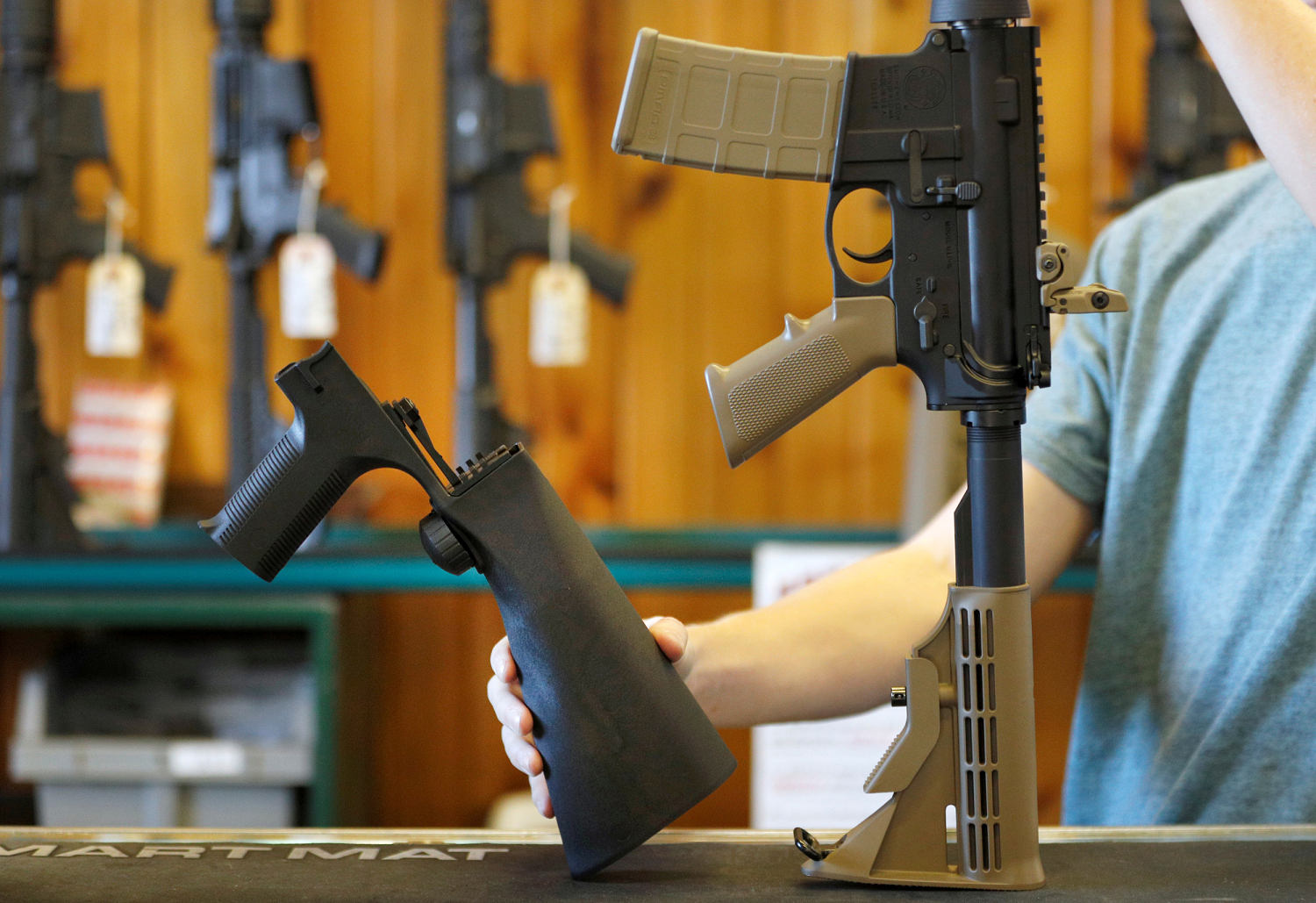Supreme Court rules gun ‘bump stocks’ ban is unlawful


WASHINGTON — The Supreme Court on Friday ruled that federal ban on “bump stocks,” gun accessories that allow semi-automatic rifles to fire more quickly, is unlawful in a loss for the Biden administration.
In a 6-3 ruling, the court held that an almost 100-year-old law aimed at banning machine guns cannot legitimately be interpreted to include bump stocks.
Even with the federal ban out of the picture, bump stocks will still not be readily available nationwide. Eighteen states have already banned them, according to Everytown for Gun Safety, a nonprofit gun-control group. Congress could also act.
The Trump administration the imposed prohibition after the Las Vegas mass shooting in 2017, in which Stephen Paddock used bump stock-equipped firearms to open fire on a country music festival, initially killing 58 people.
The Supreme Court in 2019 declined to block the regulation. The already conservative court has tilted further to the right since then, with conservative Justice Amy Coney Barrett, a Trump appointee, replacing liberal Justice Ruth Bader Ginsburg, who died in 2020.
Conservatives now have a 6-3 majority that has backed gun rights in previous cases.
The National Firearms Act was enacted in 1934 to regulate machine guns in response to Prohibition-era gangster violence.
The lawsuit was brought by Texas-based gun owner Michael Cargill, a licensed dealer who owned two bump stocks before the ban went into effect and later surrendered them to the government.
Bump stocks use the recoil energy of a trigger pull to enable the user to fire up to hundreds of rounds with what the federal government calls “a single motion.”
Cargill’s lawyers say it is a difficult skill to master.
Some gun rights advocates, including the National Rifle Association, initially backed President Donald Trump’s move to regulate bump stocks after the Las Vegas shooting, but have since lined up in opposition to it.
The case does not implicate the scope of the right to bear arms under the Constitution’s Second Amendment. The challengers argue that the government does not have the authority to ban bump stocks under the 1934 law.
The 1968 Gun Control Act defined “machine gun” to include accessories “for use in converting a weapon” into a machine gun, and the ATF concluded that bump stocks meet that definition.
Much of the legal fight hinged on the definition of machine gun as a weapon that can automatically fire more than one shot “by a single function of the trigger.”
The government argued that the phrase refers to the actions of the shooter, with a single action required to fire multiple shots. Cargill’s lawyers argued that it refers to the action inside the firearm when the trigger is engaged. Because a bump stock still requires the trigger to be engaged for each shot, it is not a machine gun, they argued.
Lower courts were divided over the issue, with both the New Orleans-based 5th U.S. Circuit Court of Appeals and the Cincinnati-based 6th Circuit ruling that the ban was unlawful.
The Biden administration appealed in both cases, while gun rights advocates contested ruling by the U.S. Court of Appeals for the District of Columbia Circuit that upheld the ban.
The court has backed gun rights in cases directly addressing the scope of the Second Amendment, including the 2022 ruling that found there is a right to carry a handgun outside the home.
But in a case argued in November, the court indicated it might stop short of striking down some long-standing gun laws in a case involving a ban on possessing firearms by people accused of domestic violence.







